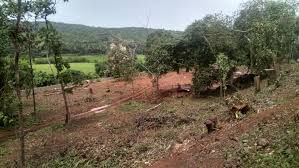Goa: Power Resource | Goa State PSC (GPSC) Preparation - GPSC (Goa) PDF Download
Natural and Power Resource of Goa

Natural Resources Overview
- Goa, a small emerald land on the west coast of India, boasts rich and diverse natural resources that have significantly contributed to the state's development and industrialization.
- The terrain is predominantly hilly, forming part of the Western Ghats, with elevations ranging from sea level to a maximum of 1700 meters above mean sea level.
- The region enjoys a warm tropical climate with annual rainfall between 350 to 450 cms during the monsoon season from June to October.
- Key rivers like Mandovi and Zuari flow into the Arabian Sea, facilitating transportation of minerals through boats.
Mineral Resources
- Goa is endowed with significant mineral resources such as iron ore, manganese ore, and bauxite, which have played a vital role in the state's industrial growth.
- In addition to major minerals, there are minor minerals like basalt, laterite stones, river sand, and murrum that are in high demand for construction purposes.
- This mineral industry is labor-intensive and provides employment opportunities for a large number of people.
Mining Sector
- Mining in Goa is primarily associated with iron ore mining, with exploration activities commencing in the early 20th century.
- Modern mining operations began in 1947, marking the onset of contemporary mining practices and the export of iron ore from the region.
Mineral Resources in Goa
- Goa, located on the western coast of India, is renowned for its rich mineral resources that have played a pivotal role in the state's industrial and economic development. The landscape of Goa, characterized by hilly terrain as part of the Western Ghats, is conducive to the presence of valuable minerals such as iron ore, manganese ore, and bauxite.
- The mining industry in Goa, particularly focused on iron ore extraction, has a long history dating back to the early 20th century. This sector has evolved over the years, with modern mining practices being established in 1947, leading to the significant export of iron ore from the region.
Significance of Mineral Resources
- The mineral resources in Goa, including iron ore, manganese ore, and bauxite, hold immense economic importance for the state. These resources have not only fueled industrial growth but also provided employment opportunities to a large section of the population.
- Additionally, the presence of minor minerals like basalt, laterite stones, river sand, and murrum caters to the construction industry's demands, further contributing to Goa's economic development.
Main Points
- The iron ore exports from Goa have seen a significant increase over the years, from 4,36,400 tons in 1951 to 35 million tons in 2008-09. Goan iron ore is primarily exported to countries like China, Japan, Taiwan, South Korea, and Eastern European nations.
- Press mineral mining in Goa is entirely privatized, with iron ore deposits spread across the Northern, Southern, and Central Blocks of the region. The Northern Block boasts higher quality and quantity of iron ore compared to the other blocks.
- Goa holds a strategic advantage over other exporting regions due to its access to a deep-sea port and waterways that facilitate inland water transport. The Mandovi and Zuari rivers, along with the Mormugao Harbor, play a crucial role in supporting the industry by providing cost-effective waterway transportation.
- The bauxite mines in South Goa cover an area of 1263.678 hectares with estimated reserves of 70 million tons. These mines contain metallurgical-grade bauxite suitable for various applications such as cement, alumina chemicals, etc. Their proximity to major ports like Marmugoa Port and Betul Port enhances their accessibility.
- Goa also possesses reserves of minor minerals like Basalt, Laterite, River sand, Laterite-Rubble, Laterite-stones, Pebble, Murrum, and Lime Shell, along with major minerals including Bauxite, Iron ore, Manganese ore, and others.
Detailed Explanation
The iron ore industry in Goa has experienced substantial growth, with exports surging from a modest 4,36,400 tons in 1951 to a substantial 35 million tons by 2008-09. This iron ore is primarily shipped off to various countries such as China, Japan, Taiwan, South Korea, and nations in Eastern Europe. The mining of iron ore in Goa is predominantly controlled by private entities, with the mineral deposits spread across different regions of the state.
- Quality Disparities in Iron Ore Deposits: The iron ore reserves in the Northern Block of Goa are not only vast in quantity but also superior in quality compared to those in the Southern and Central Blocks. This disparity underscores the richness and desirability of the iron ore found in the Northern region of Goa.
- Strategic Advantages of Goa: Goa holds a competitive edge over other exporting regions due to its possession of a deep-sea port and an intricate network of waterways that crisscross the region, facilitating efficient inland water transport. The Mandovi and Zuari rivers, in particular, along with the Mormugao Harbor, serve as vital assets to the industrial sector by providing cost-effective means of water transportation.
- Significance of Bauxite Mines: The bauxite mines located in South Goa cover a substantial area and are estimated to hold significant reserves of metallurgical-grade bauxite, suitable for a wide range of industrial applications such as cement production and alumina chemicals. The strategic positioning of these mines near major ports like Marmugoa Port and Betul Port further enhances their accessibility and economic viability.
- Diverse Mineral Reserves: In addition to iron ore and bauxite, Goa boasts reserves of various minor minerals including Basalt, Laterite, River sand, Laterite-Rubble, Laterite-stones, Pebble, Murrum, and Lime Shell. Furthermore, the region is rich in major minerals like Bauxite, Iron ore, Manganese ore, among others, highlighting its mineral wealth and diversity.
Overview of Power Resources in Goa
- Goa boasts abundant natural resources that play a crucial role in power generation. Among these resources, iron ore and natural vegetation stand out as primary contributors.
- Power resources in Goa can be classified into two main categories: conventional and non-conventional.
Conventional Power Resources
- Firewood: Firewood refers to wooden material collected and used as a fuel source. It is typically unprocessed and often in the form of logs or branches. Firewood can be either seasoned (dry) or unseasoned (fresh/wet).
- Coal: Vedanta Limited, previously known as Sesa Sterlite/Sesa Goa Limited, is a major global natural resource company with operations spanning zinc, lead, silver, oil, gas, iron ore, copper, aluminum, and commercial power.
- Petroleum: Petroleum consists of hydrocarbons of varying molecular weights and other organic compounds. The term encompasses both naturally occurring crude oil and refined petroleum products.
- Natural Gas: Gas India Limited (GAIL) and Bharat Petroleum Corporation Limited (BPCL) have initiated the development of a piped gas distribution network in northern Goa. This project, valued at Rs 119.23 crore, will benefit households, businesses, and industrial consumers, in addition to providing Compressed Natural Gas (CNG) to vehicles in Panaji and Ponda.
- Hydro Power: Goa is set to establish its inaugural hydroelectric project near the existing Anjunem reservoir dam in Taluka Sattari, as per the state government's project plan.
Non-Conventional Energy Sources
In the realm of non-conventional energy, Goa explores various avenues:
- Wind energy
- Nuclear energy
- Tidal energy
- Solar energy
- Geothermal energy
The state of Goa has significantly reduced its power losses, down to 11% in the past year, as stated by State Power Minister Milind Naik, positioning Goa as one of the most efficiently managed cities in terms of electricity.















